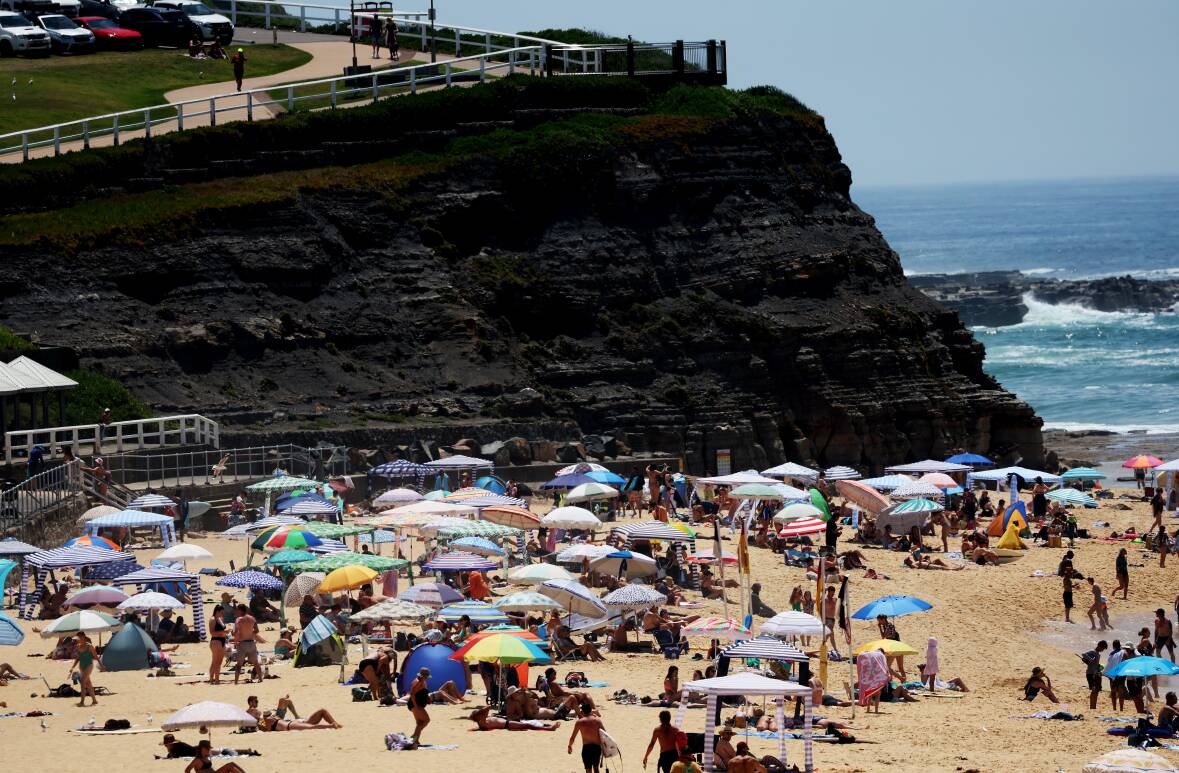
Nobbys recorded an average maximum temperature of 22.8 degrees last year, the fifth highest annual figure in 100 years.
Bureau of Meteorology data showed the highest annual maximum temperature in the last century at Nobbys was 23.2 degrees in 2019.
In 2016 and 2017, the average was 22.9 degrees. In 2013, it was 23 degrees.
The years 2014, 2015 and 2018 at Nobbys recorded an average of 22.4 degrees - the equal seventh highest figure across the century.
The CSIRO said on Monday that 2023 was "1.48 degrees above pre-industrial temperatures".
It said this was "officially the hottest year in recorded history", citing data from the Copernicus Climate Change Service.
Dr Jaci Brown, the CSIRO's climate intelligence director, said "the warming rate is within the range of what scientists expect".
"Last year was not a surprise," Dr Brown said.
She added that "we won't see even warming each year".
"Instead we will continue to see fluctuations between cool and warm years - like we had with three years of La Nina and now an El Nino."
Dr Brown said it was clear that the Earth and Australia were warming and would "continue to warm".
"Subsequent El Nino years will push us into new extremes of heat."
Dr Brown said this year's temperatures would depend on "climate variability such as El Nino".
"What is more certain is that next decade will be hotter than this one," she said.
"The heat in 2023 is a useful glimpse of our not-too-distant future. In a few decades this won't look like a hot year, it will be a normal year or possibly even a cool year.
"We need to be asking ourselves - how do we prepare for that?"
Dr Michael Grose, a CSIRO research scientist, said climate projections as far back as 1980 had forecast the global average temperatures now being experienced.
And the Intergovernmental Panel on Climate Change (IPCC) had made global warming assessments since 1990.
The 1990 report underlined the "importance of climate change as a challenge with global consequences and requiring international cooperation".
An IPCC report released in March last year re-asserted that "human activities, principally through emissions of greenhouse gases, have unequivocally caused global warming".
It said global greenhouse gas emissions had "continued to increase" from historical and ongoing "unsustainable energy use, land use and land-use change, lifestyles and patterns of consumption".
Dr Simon Marsland, of the CSIRO, said 2023 "coincided with the highest levels of greenhouse gas concentrations in our atmosphere".
Dr Marsland said human-induced global warming was a "very clear and explicable reason for 2023 being the hottest year on record".
"There are always hotter years and colder years for the global average surface temperature. El Nino years tend to be warmer overall and happen every three to five years or so."
The CSIRO is working on research to help governments, industries and communities tackle climate change.
More Hunter climate data showed that Williamtown recorded an average annual maximum temperature of 24.5 degrees last year, the equal third highest figure since records began there in 1951.
Earlier records showed high maximum average temperatures were recorded in the late 1800s and early 1900s at Nobbys, including 25.2 degrees in 1877 and 24.8 degrees in 1878.
However, it's unclear how accurate those figures were.
The Bureau of Meteorology states that "observations made before 1910 may have used non-standard equipment".
"There may have been quality issues with the climate statistics calculated from historical records," it says.







